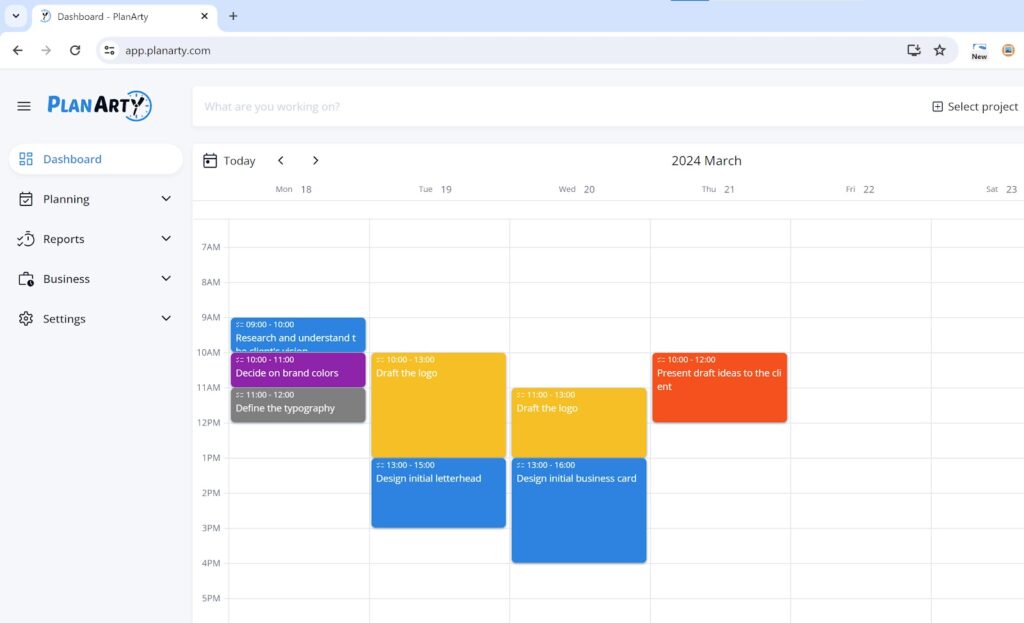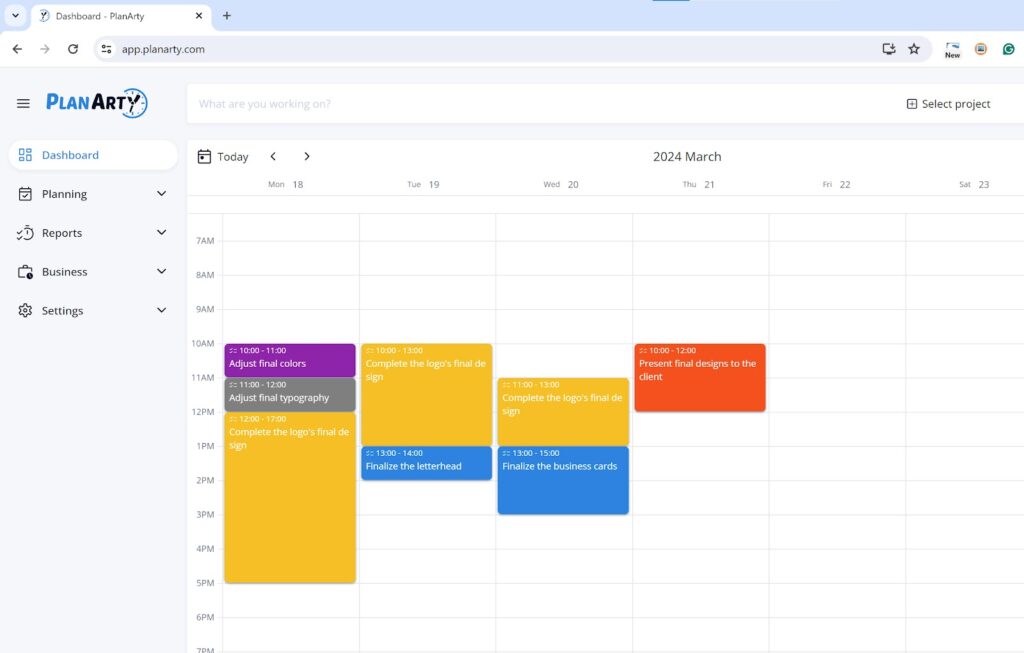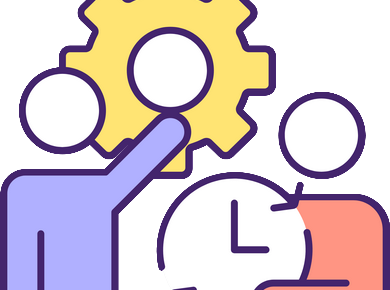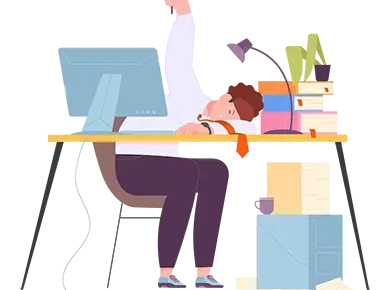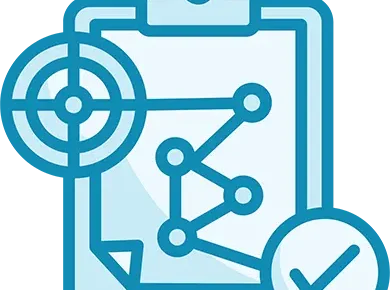In the world of freelancing, the difference between a project that propels your career forward and one that leaves you treading water often comes down to how well you can manage your tasks. Unlike traditional employment structures, freelancers must act as their project managers, determining the scope of work, deadlines, and the intricate details of every task. It’s a juggling act that’s both exhilarating and overwhelming.
Understanding the importance of project analysis and mastering the art of breaking down larger tasks into manageable parts are essential skills that can transform chaos into controlled, productive energy. Whether you’re just starting or have been freelancing for years, refining these techniques is your ticket to a more efficient, less stressful, and more profitable work life.
Why Care about Project Analysis?
Project analysis is like the foundation of a building. You can’t see it once the structure is complete, but it’s crucial for keeping everything above board. For freelancers, project analysis is the process of examining the tasks, resources, and timelines required to deliver a service or product.
The purpose of project analysis is multifaceted:
- To understand the client’s requirements thoroughly
- To define the project scope and boundaries
- To identify potential risks and challenges
- To estimate work hours and set realistic timelines
- To align the project with your capabilities and the client’s expectations
A rigorous analysis ensures that you start your project on solid ground, knowing exactly what’s ahead. It allows you to make informed decisions, present accurate proposals, and set expectations with clients, reducing the scope for misunderstandings.
Benefits of Thorough Project Analysis for Freelancers
The value of conducting a project analysis extends well beyond the initial planning phase. It offers long-term benefits that can significantly impact the success of your freelance endeavors.
By investing time in this preparatory process, you can expect to:
Minimize Time and Effort: You’ll save considerable time and drastically reduce the need for rework by identifying and addressing potential issues at the outset. This foresight allows you to streamline your workflow, ensuring that projects progress smoothly without unnecessary interruptions.
Boost Client Satisfaction: By thoroughly understanding the scope and potential challenges of a project from the beginning, you’re better equipped to meet or even surpass your client’s expectations. This level of diligence often leads to delivering projects that resonate well with your clients, fostering a sense of trust and satisfaction.
Enhance Your Professional Reputation: Committing to detailed project analysis and planning showcases your dedication to excellence and attention to detail. Over time, this practice bolsters your standing in the freelance community as a reliable professional with robust project management skills. It signals prospective clients that you can handle their projects with the utmost proficiency, making you a sought-after professional.
As a crucial part of your strategy, it’s essential to perform a thorough analysis at the project’s outset and revisit it whenever you sense that aspects of the project deviate from the plan. This could be indicated by missed deadlines, dwindling profit margins, or an increase in unbillable hours.
By revisiting your initial project analysis, you will:
Identify and Address Issues Promptly: Each time you notice a discrepancy, such as a deadline slipping through the cracks or the project not being as profitable as anticipated, reviewing your project analysis allows you to pinpoint where things went off track. This proactive approach enables you to make necessary adjustments before minor issues escalate into significant problems, ensuring the project remains on course.
Optimize Time Management: Recognizing early signs of misalignment, such as unbillable hours creeping up, encourages you to re-evaluate your time allocation and priorities. Adjusting your approach based on your initial analysis helps streamline your workflow, making more efficient use of your time and potentially freeing up hours for billable work.
Sustain Client Relationships: By continually assessing the project’s alignment with its initial goals and promises, you can take steps to realign your efforts as needed. This responsiveness not only aids in fulfilling but possibly exceeding client expectations, enhancing their satisfaction and trust in your services.
Refine Your Project Management Skills: Regularly revisiting your project analysis fosters a habit of critical evaluation and adaptive management. This practice improves your ability to manage projects effectively and contributes to your professional growth.
Keep in mind that your initial project analysis is not just a one-off effort but a continual reference point. Regularly revisiting and adjusting your strategies based on this analysis will help you manage your freelance projects more effectively and efficiently. This ongoing process guarantees alignment with your goals, enhances profitability, and upholds the delivery standards your clients expect.
The Power of Task Breakdown
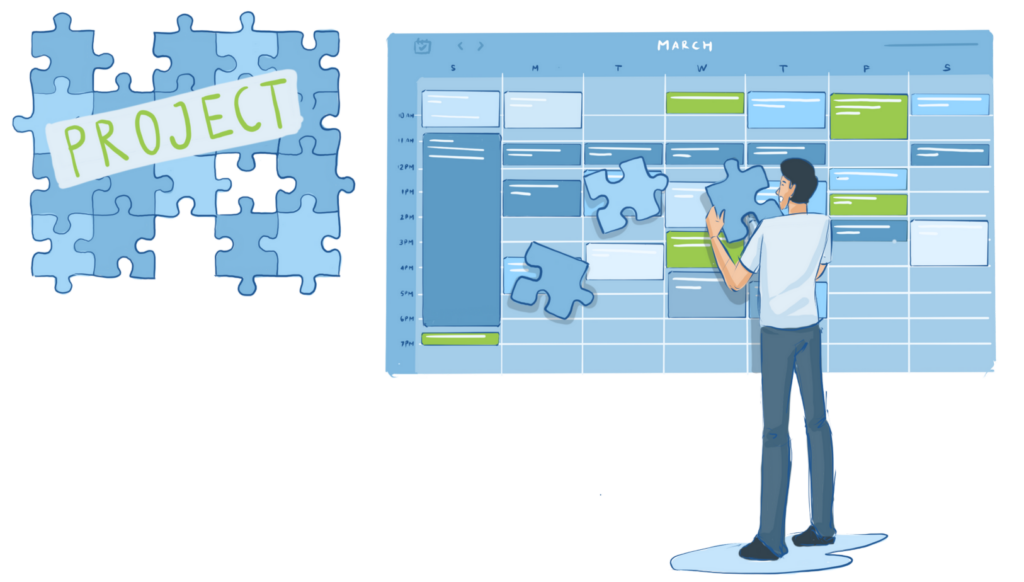
Once you’ve thoroughly analyzed your project, the next step is to dive into the tasks themselves. The art of breaking down larger tasks into smaller, more manageable segments is crucial in navigating the complexities of any project. This method ensures that even the smallest details are accounted for, preventing them from becoming stumbling blocks to your project’s success.
Strategies for Effective Task Breakdown
Remember, there’s no universal method for breaking down tasks, yet several strategies can guide you in converting daunting tasks into manageable actions:
Use a hierarchical approach: Begin with the most significant task and dissect it into smaller sub-tasks. Continue dividing each element until you’re left with tasks you can finish in a single session.
Apply the SMART framework: Ensure every task is Specific, Measurable, Achievable, Relevant, and Time-bound to facilitate clear objectives and timelines.
Consider dependencies: Be aware of tasks that rely on the completion of others. Identifying these dependencies is vital to structuring your workflow logically and efficiently.
Tools and Techniques for Task Management
Fortunately, freelancers today are equipped with a wide range of tools and techniques designed to streamline task management:
Project Management Software: You have many project management tools at your disposal, including popular options like Trello, Asana, and Monday.com, which are primarily designed for larger teams. However, as a freelancer, you can access platforms specifically crafted for your unique needs, such as PlanArty or nTask. These tools provide you with the core functionalities of project management without the added complexity often found in team-based software, ensuring a more straightforward approach to managing your projects efficiently.
The Pomodoro Technique: This approach focuses on work in short, concentrated spurts (traditionally 25 minutes), punctuated by brief breaks, to boost productivity and maintain focus.
Mind Mapping: Whether using digital tools like MindMeister or the traditional pen and paper, mind mapping can be an effective way to visualize the breakdown of tasks and is instrumental in creative endeavors.
By embracing these strategies and tools, you’re not just managing tasks; you’re enhancing your productivity and ensuring that each component of the project is tackled systematically. This structured approach to task management allows you to navigate through your projects with precision and confidence, ensuring no detail is overlooked and paving the way for successful project completion.
The Impact on Productivity and Quality
Breaking down tasks not only strengthens your productivity but also significantly enhances the quality of your work. By converting broad concepts into manageable actions, you effectively clarify your objectives and lighten the mental burden, paving the way for a more concentrated effort on your tasks.
Boosting Productivity with Task Breakdown
Facing a large project in its entirety can be overwhelming, often leading to procrastination or a scattergun approach to work. However, dissecting the project into smaller, manageable pieces makes each component seem less daunting and more achievable. This systematic breakdown aids in maintaining momentum, as completing each smaller task offers a tangible sense of progress and accomplishment. The resulting structure allows you to systematically tackle the project, reducing the likelihood of overlooking critical elements and ensuring a steady march towards completion.
Achieving Higher Quality Through Detailed Planning
Rushing through tasks or approaching them without a clear plan can compromise the quality of your deliverables. By employing a detailed task breakdown, you ensure that every part of the project is given due consideration, allowing sufficient time for each task to be completed thoroughly. This focused approach minimizes errors and oversights, directly contributing to the delivery of superior outcomes. Each segment of the project is refined to its highest potential, collectively elevating the overall quality of the work. This strategic allocation of resources and effort meets and often exceeds client expectations, setting a high standard for your work and establishing your reputation for excellence.
The WDH Method
Developing a personal strategy for project analysis and breakdown is an ongoing process.
The WDH (Week, Day, Hour) method is an effective strategy for managing projects by dividing them into weekly tasks. Initially, you outline a schedule detailing when each task will be tackled within specific weeks. This approach allows you to provide your clients with an accurate delivery timeline for the project.
As you enter the designated week for a task, break it down into smaller, more manageable sub-tasks that you can complete within a few hours. Following this subdivision, allocate time in your calendar for each sub-task for the upcoming week. This detailed planning lets you assess your capacity to accomplish the weekly task promptly and take necessary actions if you find it unmanageable.
Moreover, having a well-defined weekly schedule mitigates procrastination by setting clear, immediate objectives. It also offers insight into your available time, helping you gauge your capacity to take on new projects or engage in other activities. Through this systematic breakdown and scheduling, the WDH method not only streamlines project execution but also enhances overall productivity and time management.
Practical Example
Please note that the estimates given in the following example are purely illustrative and intended solely for demonstration purposes.
Imagine you’re a graphic designer tasked with creating a comprehensive branding package for a small startup within three weeks. This package encompasses designing a logo, selecting typography, crafting business cards and letterhead, choosing brand colors, and compiling a basic brand guidelines document.
Step 1: Breaking Down the Project
To tackle this efficiently, start by deconstructing the project into its core stages:
- – Drafting the initial designs
- – Implementing revisions and refining the designs based on client feedback
- – Finalizing minor adjustments
Step 2: Creating a Weekly Schedule
Given the three-week deadline, allocate each major stage to a specific week to ensure a structured workflow:
- Week 1: Focus on creating initial drafts
- Week 2: Revise and refine the designs as per client feedback
- Week 3: Complete final adjustments and compile the brand guidelines document
With your weekly focus areas defined, plan each week in detail by breaking down each stage into smaller, manageable tasks. Schedule these tasks in your calendar, dedicating specific times to each.
Step3: Detailed Weekly Breakdown
Week 1 – Create the first draft
| Task | Estimated | Scheduled at |
| Research and understand the client’s vision | 1 h | Monday, 09:00 – 10:00 |
| Decide on brand colors | 1 h | Monday, 10:00 – 11:00 |
| Define the typography | 1 h | Monday, 11:00 – 12:00 |
| Draft the logo | 5 h | Tuesday, 10:00 – 13:00Wednesday, 11:00 – 13:00 |
| Design initial business card | 3 h | Wednesday, 13:00 – 16:00 |
| Design initial letterhead | 2 h | Tuesday, 13:00 – 15:00 |
| Present draft ideas to the client | 2 h | Thursday, 10:00 – 12:00 |
Week 2 – Revisions and Refinements
| Task | Estimated | Scheduled at |
| Adjust final colors | 1 h | Monday, 10:00 – 11:00 |
| Adjust final typography | 1 h | Monday, 11:00 – 12:00 |
| Complete the logo’s final design | 10 h | Monday, 12:00 – 17:00Tuesday, 10:00 – 13:00Wednesday, 11:00 – 13:00 |
| Finalize the business cards | 2 h | Wednesday, 13:00 – 15:00 |
| Finalize the letterhead | 1 h | Tuesday, 13:00 – 14:00 |
| Present final designs to the client | 2 h | Thursday, 10:00 – 12:00 |
Week 3 – Final Adjustments
| Task | Estimated | Scheduled at |
| Conduct final revisions for the logo | 2 h | Monday, 12:00 – 14:00 |
| Business cards final revision | 1 h | Monday, 14:00 – 15:00 |
| Letterhead final revision | 1 h | Tuesday, 13:00 – 14:00 |
| Compile the brand guidelines document | 5 h | Wednesday, 09:00 – 14:00 |
This structured approach guarantees that you will complete the project by the agreed deadline and use your time optimally. To ensure total transparency at the conclusion of a project, consider attaching your detailed timesheet to the invoice. This practice can expedite the payment process by providing the client with a thorough understanding of your work.
A Final Push for Improved Work Management
The freelance world is competitive, and effective project management can make a difference. As daunting as it may seem, project analysis and task breakdown are not fancy luxuries reserved for large companies with dedicated planners. They are practical, accessible strategies that every freelancer can—and should—implement.
By taking the time to dissect your projects and tasks, you are paving the way for a more productive, less stressful freelancing experience. Encouragingly, the discipline required to master these techniques spills over into all areas of your professional life, fostering a reputation for reliability and quality.
Your freelance career is a series of projects, each with its unique opportunities and challenges. By treating each assignment with the respect and diligence it deserves, you’re not just working but building a resilient, growing business. Start today and witness the ripple effect of improved project management in your career. Your future self will thank you.


